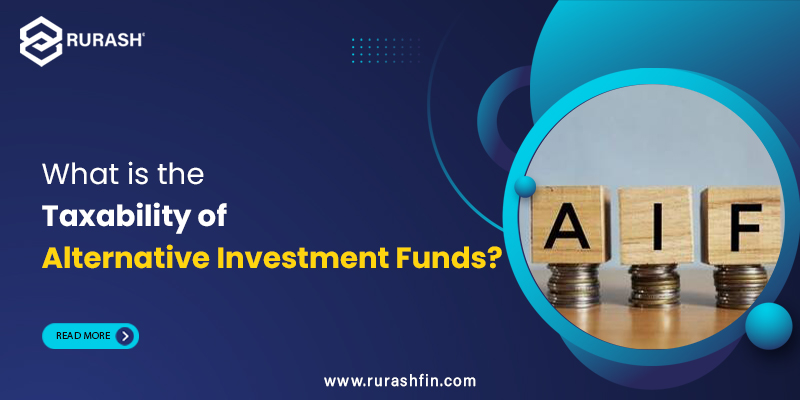Investing in Alternative Investment Funds (AIFs) has become increasingly popular in India, regulated by the Securities and Exchange Board of India (SEBI). With a remarkable 30% growth in the fiscal year 2022-23, AIFs have garnered significant attention from investors. In this blog, we will explore the tax implications of AIFs, delving into the regulations set by SEBI and the various tax structures based on the AIF category.
AIFs can take various forms, including trusts, companies, limited liability partnerships, or corporate bodies. Despite this diversity, a significant number of AIFs registered with SEBI are in the form of trusts. The total commitment raised for AIFs surged from Rs 6.41 lakh crore in March 2022 to Rs 8.34 lakh crore in March 2023.
Understanding AIF Categories and Their Tax Implications
Category I and II AIFs:
The Finance Act of 2015 brought forth a distinctive tax regime for Category I and II AIFs, endowing them with a coveted pass-through status. This essentially means that the income generated by the fund is not taxed at the fund level but instead in the hands of the investor. The beauty of this arrangement lies in the fact that the fund is exempt from shouldering any tax obligations on investment income or capital gains. However, a caveat exists – if the income generated by the fund is treated as business income, then the fund bears the tax burden.
Now, let’s break down the tax structure with a closer look:
- Long-Term Capital Gains (LTCG): Investments held for over a year in Category I and II AIFs fall under the long-term capital gains category. The tax is levied based on the holding period, with a standard rate of 10% for listed shares and 20% for unlisted shares and other assets.
- Short-Term Capital Gains (STCG): Short-term capital gains from Category I and II AIFs align with the investor’s tax bracket, generally taxed at a rate of 15%.
- Dividend Income: Dividends from AIFs are taxed based on the investor’s tax slab.
- Interest Income: Any interest income earned through Category I and II AIFs is subject to taxation according to the investor’s tax slab.
These rates are stipulated under the Income Tax Act, but in certain scenarios, they may be replaced by rates agreed upon in the Double Taxation Avoidance Agreements (DTAAs) between countries. Additionally, if Category I and II AIFs distribute income (excluding business income) to investors, a withholding tax of 10% applies to resident investors. For non-resident investors, the withholding tax rates are determined based on the provisions under the Act or DTAA, whichever is more favourable.
Category III AIFs:
In contrast to Category I and II, Category III AIFs do not enjoy the pass-through status. This means that any income—be it investment income, capital gain, or business income—is taxed directly in the hands of the fund itself. Let’s delve into the specifics:
Long-Term and Short-Term Capital Gains, Business Income, and Dividend: All types of income generated by Category III AIFs are subject to taxation at the fund level. The tax rates vary for different types of income, creating a nuanced landscape.
In essence, while Category I and II AIFs provide a streamlined pass-through tax mechanism benefiting investors, Category III AIFs operate under a distinct framework, with the fund itself bearing the tax responsibility for various types of income.
Summary of Income Tax Implications for AIF Investors
Category I and II AIFs
| Type of Investment | Tax Implications |
| Long-term Capital Gains (LTCG): Listed Shares | 10% |
| Long-term Capital Gains (LTCG): Unlisted Shares | 20% + Indexation Benefit |
| Long-term Capital Gains (LTCG): Other Assets | 20% + Indexation Benefit |
| Short-term Capital Gains (STCG): Listed Shares | 15% |
| Short-term Capital Gains (STCG): Unlisted Shares and Other Assets | Varies based on investor type |
| Dividend Income: | Varies based on investor type |
| Other Income: | Varies based on investor type |
Surcharge Rates:
- Individual/HUF: 10% for gains >Rs. 50 lakhs but < Rs. 1 crore, 15% for gains > Rs. 1 crore
- Firm/LLP: 12%
- Company: 10% under the new regime, 7% (total income > Rs. 1 crore but < Rs. 10 crores), 12% (total income > Rs. 10 crores)
Category III AIFs
| Type of Income | Tax Rate |
| Long-Term Capital Gain | Basic Tax Rate- 10%, MMR- 11.96%, Surcharge- 15%, Education Cess- 4% |
| Short-Term Capital Gain | Basic Tax Rate- 15%, MMR- 17.94%, Surcharge- 15%, Education Cess- 4% |
| Business Income | Basic Tax Rate- 30%, MMR- 42.74%, Surcharge- 37%, Education Cess- 4% |
| Dividend Income | Basic Tax Rate- 30%, MMR- 42.74%, Surcharge- 37%, Education Cess- 4% |
Please note that the information provided above is for general informational purposes only and should not be construed as professional financial or tax advice. Tax laws and regulations are subject to change, and therefore one must stay updated with the tax norms or seek expert help if needed.
As the Indian investment scenario continues to evolve, understanding these tax intricacies is paramount for investors navigating the AIF landscape. Also, staying informed about the tax implications ensures that investors can make well-informed decisions aligned with their financial goals.
Elevate your investment strategy with Rurash Financials. Explore the world of Alternate Investment Funds (AIFs) for unparalleled diversification as best suited for high-net-worth individuals, institutions, and corporate clients.

